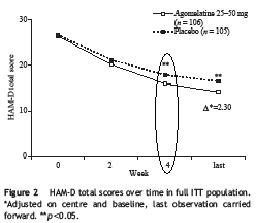 Routinely, I enjoy crapping on the common biological explanations of various mental illnesses (e.g., monoamine hypothesis). However, this does not mean that I do not believe in the importance biology plays in the development of mental illness.
Routinely, I enjoy crapping on the common biological explanations of various mental illnesses (e.g., monoamine hypothesis). However, this does not mean that I do not believe in the importance biology plays in the development of mental illness.To say that a specific mental illness is the result of a "chemical imbalance" or one "bad gene" is ridiculous. The problem with biological explanations of mental illness is that they neglect the psycho/social aspects of illness development (they are also poorly support by research too!).
Since I'm a psychologist, I pay attention to stress. I believe stress to the be the glue that binds biology and psychology together. This is because stress or more importantly, psychological stress, has a biological mechanism that has both short-term and long-term effects on the body and brain. Certain aspects of the physiology of stress act as "transcription factors," that is, they regulate gene expression. This means the effects of stress can be felt acutely (i.e., in the short-term) or many years later (e.g., the average time span between onset of sexual abuse and the development of clinical depression is 11.5 years, 1).
This poses an interesting question: can the age at which one experience "stress" predict both the onset and type of mental illness? That's what Lupien et al. (2) wanted to answer in an interesting paper that was published in Nature Reviews Neuroscience earlier this year.
Before I delve into their hypothesis, I am required by law to describe the hypothalamus-pituitary-adrenal (HPA) axis (see below).
 This is how it works. You perceive a stressor (e.g., all the women with whom you were having extra-marital affairs, suddenly decide to tell their "stories" to TMZ), your hypothalamus releases corticotropin release hormone (CRH). CRH stimulates its neighbor, the pituitary gland, to release adrenocorticotropic hormone (ACTH), which finds its way down your blood stream and stimulates the adrenal glands to release glucocorticoids (steroids) as well as catecholamines (epinephrine and norepinephrine).
This is how it works. You perceive a stressor (e.g., all the women with whom you were having extra-marital affairs, suddenly decide to tell their "stories" to TMZ), your hypothalamus releases corticotropin release hormone (CRH). CRH stimulates its neighbor, the pituitary gland, to release adrenocorticotropic hormone (ACTH), which finds its way down your blood stream and stimulates the adrenal glands to release glucocorticoids (steroids) as well as catecholamines (epinephrine and norepinephrine).
After this, many wonderful things occur: your wife attacks you with a golf club; your blood sugar spikes, blood pressure and heart rate increase, which delivers a rush of blood and oxygen to your thigh muscles. This enables you to run to your SUV, which you crash 5 feet from your drive way. Now the stressor is gone (i.e., you release a statement on your website indicating that you need to do some "soul searching"); the glucocorticoids bind to certain receptors (i.e., GRs & MRs), and the system shuts down and returns back to its homeostatic baseline.
Lupien et al. reviewed the relevant literature on the effects of stress (e.g., chronic stress, abuse, etc) and neurological development during the following life phases: prenatal, postnatal, adolescence, and adulthood. What they found is summarized below.
 "How the effects of chronic or repeated exposure to stress (or a single exposure to severe stress) at different stages in life depend on the brain areas that are developing or declining at the time of the exposure."
"How the effects of chronic or repeated exposure to stress (or a single exposure to severe stress) at different stages in life depend on the brain areas that are developing or declining at the time of the exposure."(Paraphrased for simplicity) prenatal stress (defined as maternal stress or exogenous steroids during pregnancy) affects the development of many of the brain regions that are involved in regulating the HPA axis (i.e., hippocampus, frontal cortex, and amygdala).
"Postnatal stress has varying effects: exposure to maternal separation during childhood leads to increased secretion of glucocorticoids, whereas exposure to severe abuse is associated with decreased levels of glucocorticoids. Thus, glucocorticoid production during childhood differentiates as a function of the environment."
"From the prenatal period onwards...some areas undergo rapid growth during a particular period. From birth to 2 years of age the hippocampus is developing; it might therefore be the brain area that is most vulnerable to the effects of stress at this time. By contrast, exposure to stress from birth to late childhood might lead to changes in amygdala volume, as this brain region continues to develop until the late 20s. During adolescence...there is an important increase in frontal volume. Consequently, stress exposure during this period should have major effects on the frontal cortex."
"In adulthood and during aging the brain regions that undergo the most rapid decline as a result of aging (amygdala, frontal cortex, hippocampus) are highly vulnerable to the effects of stress hormones. Stress during these periods can lead to the manifestation of incubated effects of early adversity on the brain or to maintenance of chronic effects of stress."
What all that psychobabble means is this: certain brain regions (i.e., amygdala, hippocampus, & frontal cortex) are more vulnerable to stress during certain developmental stages (e.g., the hippocampus is most vulnerable before age two). What the authors are postulating is that these areas, when affected by stress, can be use to predict the nature of the psychopathology that will result from exposure to stress at different ages. Or in their words:
"Exposure to adversity at the time of hippocampal development could lead to hippocampus dependent emotional disorders, which would be different from disorders arising from exposure to adversity a times of frontal cortex development."
This sounds very interesting! Is there any evidence to support it? They list two studies (3, 4). "The first reported that women who experienced trauma before the age of 12 years had increased risk for major depression, whereas women who experienced trauma between 12 and 18 years of age more frequently developed PTSD. The second study reported that repeated episodes of sexual abuse were associated with reduced hippocampal volume if the abuse occurred early in childhood, but with reduced prefrontal cortex volume if the abuse occurred during adolescence."
This does seem to support their hypothesis. However, if you read those two studies, you'll find that it is not as clean cut as these authors suggest. Also, other variables were not discussed such as temperament and genetics, sex and gender, SES, and culture. The research is also murky on what constitutes a "prefrontal" disorder versus a "hippocampal" disorder (not to mention the many anatomical overlaps between psychiatric diagnoses). In spite of those limitations, it is an interesting hypothesis that is worth exploring.
To read an excellent book on this subject, check out Robert Sapolsky's Why Zebras Don't Get Ulcers.
Lupien, S., McEwen, B., Gunnar, M., & Heim, C. (2009). Effects of stress throughout the lifespan on the brain, behaviour and cognition Nature Reviews Neuroscience, 10 (6), 434-445 DOI: 10.1038/nrn2639






























